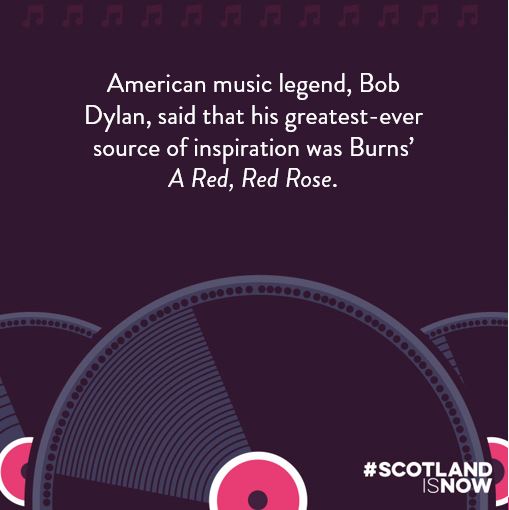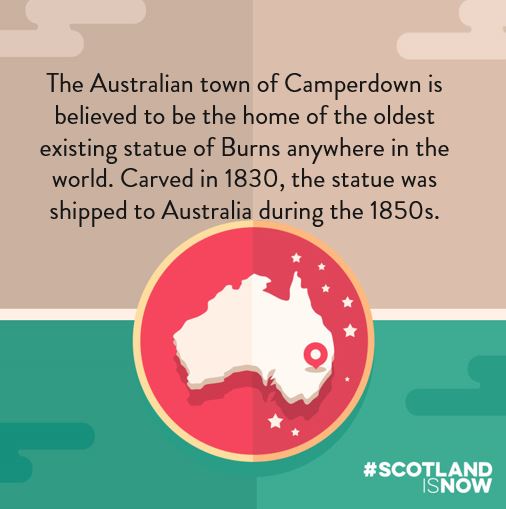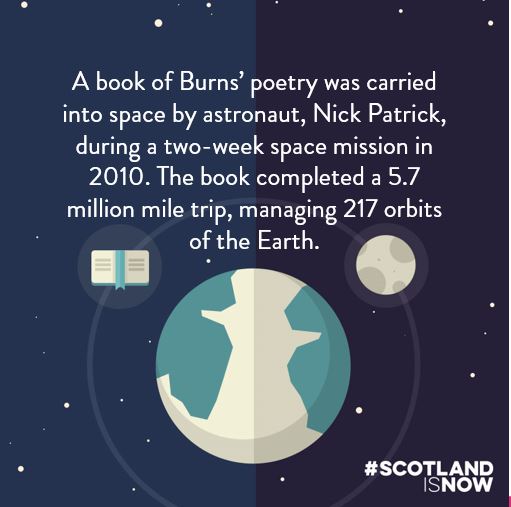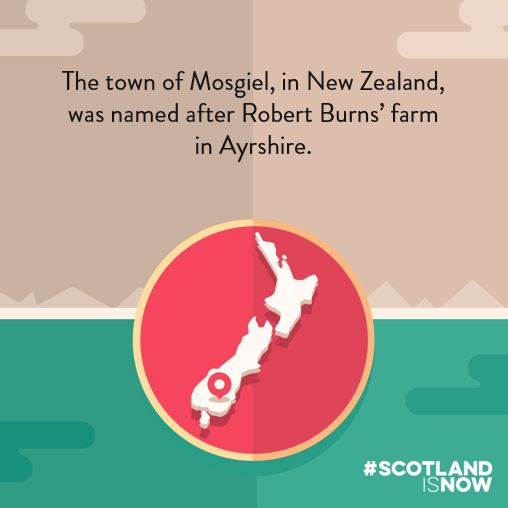An impressive stat(ue)
After Queen Victoria and Christopher Columbus, Robert Burns has more statues dedicated to him around the world than any other non-religious figure.
This ain't no phony fact
J.D. Salinger’s 1951 novel, 'The Catcher in the Rye' based its title on the Robert Burns poem, 'Comin’ Thro’ the Rye'.
More than a poet
Although best known as a poet, Burns actually wrote and collected almost double the amount of songs than poems.
Wee, sleekit Steinbeck
John Steinbeck’s classic 1937 novel, 'Of Mice and Men' took its name from a line in the Burns poem To a Mouse – “The best laid schemes o’ mice an men / Gang aft agley”.
For a' that and a' that
'Is There For Honest Poverty' (also known as 'A Man’s a Man for a’ That') was chosen to open the new Scottish Parliament in 1999 due to its themes of equality and universal brotherhood.
Should auld acquaintance be...recorded
'Auld Lang Syne' is recognised by the Guinness Book of World Records as one of the top three most popular songs in the entire English language.
Haud yer wheesht!
Glasgow’s Mitchell Library is believed to house the world’s largest Burns collection, including translations of the poet’s work into more than 30 languages.
Praise on a Presidential level
American President, Abraham Lincoln, had a lifelong admiration for the work of Robert Burns, with some claiming that the poet’s work had a key role in helping Lincoln win the American Civil War and abolish slavery.
Life is like a box of...poems
The work of Robert Burns has appeared in hundreds of films and TV programmes, including Hollywood classics like 'It’s a Wonderful Life' (1946), 'When Harry Met Sally' (1989) and 'Forrest Gump' (1994).
Big head...big brain...
Burns’ body was exhumed in 1815 to be placed in a new mausoleum in the town of Dumfries. During this process, a plaster cast of his skull was taken for study, which was found to be larger than the average man’s skull.








